#natural henna powder
Explore tagged Tumblr posts
Text
#natural henna powder#henna powder#natural henna#organic henna powder#natural henna products#natural hair dye powder#best henna powder#henna powder manufacturer#henna powder exporter
0 notes
Text

Organic Henna Powder For Hair - Natural Henna Powder - Apexherbex
Looking for the best organic henna powder for hair? Apexherbex offers 100% natural henna powder, which is chemical-free and apt for skin and hair. Learn more.
0 notes
Text
Lemongrass Hydrosol Skin Toner
Hydrosols are remedies that don’t irritate the skin and can be used on any skin type for a wide range of benefits. Since ancient times, these simple, light, and potent plant liquids have brought peace and calm to the skin and mind. When you use a hydrosol regularly, it tightens the skin, makes it more hydrated, and gives it more volume. It also helps keep the skin’s pH level stable and provides it with therapeutic components from plants.
Lemongrass Hydrosol Skin Toner
Lemon hydrosol is well known for how soothing it is for the skin and how nice it smells. It still has a lifting and pleasant smell that stays true to a gritty scent with just a touch of flowery notes. The smell is earthy. In addition, lemongrass hydrosol can make cells stronger, stop sweating, and kill fungi. Hydrosol can be used to make great facial toners. It’s the perfect thing to use every day because it’s made with pure, natural lemongrass hydrosols that come from real flowers and don’t have any extra ingredients. Regular use, after cleansing and before moisturizing, helps to balance the pH of the skin, even out the skin’s texture, repair the pores, moisturize the skin, reduce the look of flaws, and stop the signs of aging from showing on the outside.
Benefits of Hydrosol
Hydrosol controls sebum
Lemongrass sebum can cut down on how much the liquid is like water and control how shiny it is. Because of this, lemongrass is often used in skincare products as an astringent to stop the skin from making too much sebum. If your skin is very oily, you might feel better using it as an astringent. If you have oily skin, adding this ingredient to your facial cleanser or toner may help you get rid of it quickly. Even if your skin is dry, you don’t have to worry about your sebum production being out of balance because lemongrass hydrosol skin toner can also help restore balance to the sebum production of dry skin. hydrosol skin toner
Hydrosol has a Pleasant Fragrance
In addition to having a beautiful smell, lemongrass hydrosol also has a great citrus smell. Because it smells fresh and energizing, it is used in many skin care products and can be put in a hydrosol diffuser. People say that the smell of lemongrass hydrosol skin toner has a hint of citrus and spice. This hydrosol has a pleasant scent that both men and women can use. After you get out of the shower, you can sprinkle it on your skin and comb it through your hair as a natural perfume. It can also be made into an antiperspirant spray for the hot summer months.
Hydrosol helps to make breakouts work
For a long time, people have used lemongrass to treat a wide range of skin problems and keep bacterial infections at bay. Research has shown that the antibacterial properties of lemongrass make it an effective natural treatment for acne. This method has been used for a very long time. Lemongrass hydrosol is known for having excellent antibacterial properties because it has a lot of citral and geraniol, which are two different ingredients. When done regularly, washing the face with lukewarm water and a skin toner that contains lemongrass immediately clears the pores of dirt and germs, ridding the skin of bacteria that can cause acne, pimples, and dark spots, and giving the face a radiant and flawless look.hydrosol skin toner
Hydrosol calms and soothes rashes
Lemongrass, well-known for its anti-inflammatory and moisturizing properties, does wonders for soothing skin irritated by dry weather in the summer or winter. When used in the right amounts, moisturizing creams or body lotions that contain the essence of lemongrass leaves the skin soft, smooth, hydrated, and free of redness and roughness.
Hydrosol protects against contamination and disease
Lemongrass hydrosol has a lot of antiseptic properties that can kill microorganisms that cause skin problems like boils, warts, and fungal infections. It’s important to use soap, body wash, and hand wash with lemongrass extracts to keep your skin clean, healthy, and safe from diseases. It works best to use these products not only on the body but also on the face.
Hydrosol helps get rid of stress
Several studies have shown that lemongrass hydrosol skin toner can calm the nervous system. The soothing effects of the hydrosol and the pleasant smell make it a great addition to bathwater. The hydrosol can clean and soften the skin, making it look and feel like you just spent a day at the spa.
Hydrosol cleans the top layer of the skin.
Lemongrass hydrosol has cleansing properties that can help clean out the pores on the skin and get rid of pollutants. Using cleansers and toners with this hydrosol helps keep your skin clear and gives you the feeling that you’ve done an excellent job cleaning up your appearance.
Hydrosol is antioxidant
Antioxidants are suitable for your skin and the rest of your body because they can eliminate harmful free radicals in the environment and slow down the aging process. Lemongrass can help protect your skin from the harmful effects of pollutants in the background, which can help your skin stay fresh and glowing. Lemongrass hydrosol skin toner can help make collagen, which can help stop the skin from sagging due to age-related loss of elasticity. This can be done by putting the hydrosol directly on the skin where it is needed. Hydrosol also protects your skin from the sun’s harmful ultraviolet rays. If you have dry skin or skin that has been injured, you can use lemongrass hydrosol skin toner
to protect your skin from the damage the environment can do and to hydrate your skin. Hydrosol can be put on red or itchy skin because of eczema or a rash. Also, hydrosol skin toner is safe to use for most skin types that get acne. hydrosol skin toner
Hydrosol helps bring down the redness
Natural anti-inflammatory compounds like linalool and linalyl acetate can be found in lemongrass hydrosol. Small amounts of lemongrass hydrosol are safe to use and may help reduce skin inflammation. When put on the skin, lemongrass hydrosol skin toner works well in calming products like mists. When used as part of after-sun care, it also helps reduce redness.
Hydrosol helps keep the skin in good condition
The phenolic chemicals in lemongrass hydrosol, which are antioxidants, protect the skin from the damage that free radicals can do. Free radicals can damage healthy cells and speed up the aging process. Because it has antioxidant properties, lemongrass hydrosol skin toner will help your skin look healthy and young for much longer.
Neelamari Herbs
These are just some of the many benefits you can get from Neelamari lemongrass hydrosol. At the moment, there is more interest in learning how to use hydrosols as skin toners for their healing properties. More hydrosols and floral waters will likely hit the market because of the growing demand for natural ingredients in skin care products.
0 notes
Text
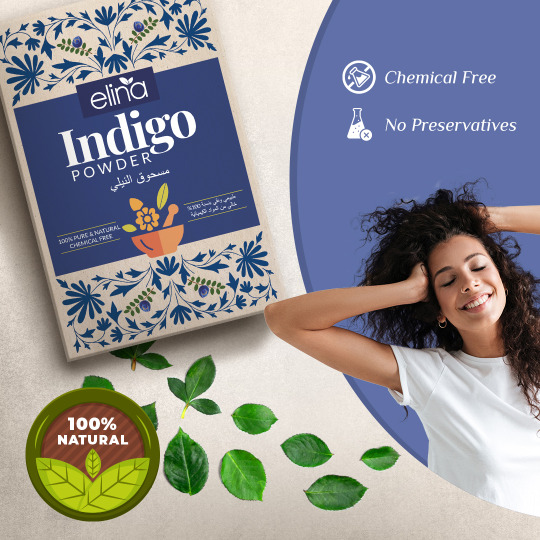
Embrace Natural Hair Color with Elina Indigo Powder! 💙🌿
Looking for a safe, chemical-free way to color your hair? Elina Indigo Powder offers a 100% natural solution to achieve beautiful, dark tones while nourishing and strengthening your hair. It’s the perfect herbal alternative to synthetic dyes, keeping your hair healthy and vibrant.
Why Elina Indigo Powder?
Rich, Deep Hair Color: Provides dark, vibrant tones without damaging chemicals.
Nourishing Formula: Strengthens and revitalizes your hair as it colors.
All-Natural: Free from harsh additives—just pure indigo leaves.
Sustainable Beauty: Eco-friendly and perfect for conscious beauty routines.
How to Use:
Mix Elina Indigo Powder with water to form a paste.
Apply to clean hair and leave for 1-2 hours.
Rinse thoroughly for naturally vibrant hair.
For darker shades, use after applying henna for deeper, richer color.
Revitalize your hair naturally with Elina Indigo Powder and embrace the power of nature for your beauty routine! 🌿✨
Shop Now: https://elinastores.com/product/elinaindigopowder
#elinastores.com#herbal powder for hair#hair color#henna#amazon#online business#ecommerce#hair care#hairgrowth#digital marketing#hair treatment#natural hair care
2 notes
·
View notes
Text

Hey #Lovers❤️🔥! Embrace the beauty of fall with 🌺RAW1111.COM🥑 🍂🍁 Fall Colors & Natural Dye Magic! 🎨🍁. Learn how nature’s palette can inspire your wardrobe! #GVWU Go Vegan With Us 🌱💚
#naturalremedies#natural remedy#natural dyes#all natural#natural way#henna for hair#organic henna powder#hennalovers#natural henna#education#educate yourself#history#ancient history#blogger#blogging#blog#nature#raw vegan#fruits#vegan food#vegan lifestyle#vegetables#gvwu#realnessalwayswins#plantbased#vegan
1 note
·
View note
Text

Organic Henna Powder for Hair – Natural Henna Hair Dye Solution
Revitalize your hair with Its Herbal Magic’s Organic Henna Powder for Hair. This natural henna hair dye offers vibrant color while nourishing and strengthening your hair. Free from chemicals, it's a perfect choice for enhancing shine and promoting healthier, stronger hair. Embrace natural ingredients for long-lasting color and care.
0 notes
Text

Henna artist in Baltimore Maryland.
Please note I require a minimum of 2 hours of service.please only reach out if you intend to hire me for at least 2 hours or more🙏
Instagram: https://www.instagram.com/rh_henna_artist
#artists on tumblr#cats#city#digital art#nature#henna art#henna tattoo#henna design#hennatual#organic henna powder#henna nueller#the henna wars
1 note
·
View note
Text
Hennaveda Organic Henna Powder: Nature's Secret for Radiant Beauty
Unlock the ancient beauty secrets of Ayurveda with Hennaveda Organic Henna Powder. Our meticulously sourced and finely ground henna leaves bring you the purest form of nature's goodness. Immerse yourself in the art of self-care as you experience the enriching benefits of Hennaveda's premium quality henna powder.
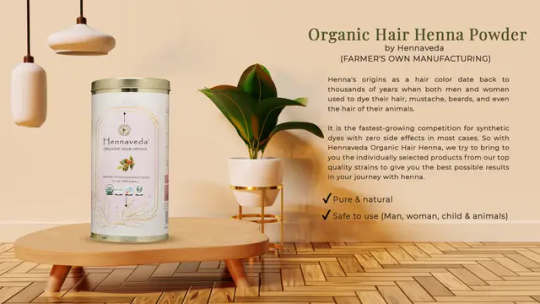
100% Organic: Our henna powder is free from harmful chemicals and pesticides, ensuring a natural and safe beauty ritual.
Ayurvedic Elixir: Inspired by the age-old principles of Ayurveda, Hennaveda is more than just henna—it's a holistic beauty experience.
Radiant Results: Enhance your hair's natural shine, strengthen strands, and promote a healthy scalp with the nourishing power of Hennaveda.
Versatile Beauty: Not just for hair, Hennaveda can also be used for intricate henna tattoos, providing a touch of traditional charm.
Embrace the beauty within you with Hennaveda Organic Henna Powder—where timeless tradition meets modern self-care. Elevate your beauty routine naturally!

Pure Excellence: Hennaveda is crafted with precision, ensuring a consistent and smooth texture for easy application. Revel in the luxurious feel as you indulge in the silky sensation of our finely-milled henna powder.
Vibrant Color Payoff: Experience the magic of rich, long-lasting color that captivates. Hennaveda creates a spectrum of beautiful shades, from auburn warmth to deep, lustrous brown, allowing you to express your individuality with every application.
Ethical and Sustainable: Hennaveda is committed to eco-friendly practices. Our henna is sourced from sustainable farms, promoting ethical harvesting methods that prioritize both environmental and community well-being.
Unleash Your Creativity: Beyond its beauty-enhancing properties, Hennaveda invites you to explore your artistic side. Create stunning and intricate henna designs that celebrate the spirit of self-expression.
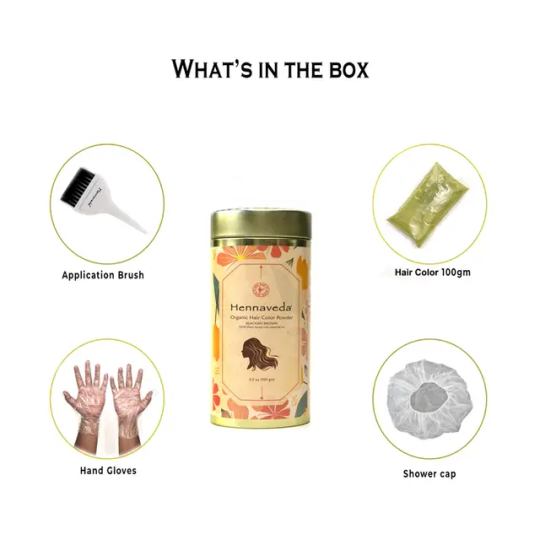
Confidence in Every Application: Trust in the purity of Hennaveda Organic Henna Powder. Whether you're preparing for a special occasion or simply pampering yourself, our henna powder instills confidence in every brushstroke.
Transform your beauty ritual with Hennaveda and embrace the holistic allure of organic henna. Immerse yourself in the timeless traditions of self-care, radiate natural beauty, and let Hennaveda be your trusted companion on the journey to a more vibrant you.
0 notes
Text

Enjoy the best products deals on halfpe.com
#https://halfpe.com/products/orgasure-bhringraj-henna-and-brahmi-powder-natural-hair-care-pack-200g-x-3-total-600-gm#join our whatsapp link for more collections#https://whatsapp.com/channel/0029VaNGuLm1iUxfTNlxzK1w
0 notes
Text
Taj Henna: Your Destination for Organic Herbal Powder Delights
In a world that's swiftly turning towards organic and natural solutions, Taj Henna stands tall as a beacon of purity. This isn't just a brand; it's a commitment to health, wellness, and the natural beauty that's hidden within us. Taj Henna takes the essence of ancient herbal remedies and brings them to your doorstep with a modern twist. From organic indigo powder for hair to the best Brahmi powder in India, Taj Henna has become synonymous with quality and authenticity in the realm of herbal products.
The Herbal Renaissance: Taj Henna's Journey Taj Henna's journey reads like a chapter from a book on natural healing. Rooted in the heart of India, this brand has tapped into the country's ancient wisdom of Ayurveda, the science of life. For centuries, Ayurveda has been a source of holistic well-being, and Taj Henna has taken this tradition forward with great pride.
Organic Indigo Powder for Hair: Nature's Color Palette Picture this: you're looking for a change, something exciting yet gentle on your hair. Taj Henna's organic indigo powder for hair becomes your trusted companion. It's more than just hair color; it's an experience. Free from harmful chemicals, Taj Henna's indigo powder is a gift from nature. It not only imparts a beautiful dark hue to your hair but also nourishes them from root to tip. No more worrying about hair damage or allergies, because Taj Henna's indigo powder is pure, safe, and chemical-free.

Brahmi Powder: The Brain Booster In the rush of modern life, stress and anxiety often take center stage. But Ayurveda offers a natural solution, and Taj Henna brings it to your doorstep. Buy Brahmi powde in india, often referred to as the brain booster. Taj Henna's Brahmi powder is packed with the goodness of this miraculous herb. It enhances memory, improves cognitive abilities, and reduces stress. Incorporating it into your daily routine is like giving your brain a refreshing spa day.
The Taj Henna Promise: Purity, Quality, and Wellness What sets Taj Henna apart is its unwavering commitment to purity and quality. In a market flooded with synthetic and chemically laden products, Taj Henna emerges as a breath of fresh air. They work closely with local farmers, ensuring that only the finest herbs and ingredients make their way into your products. Each batch is rigorously tested to meet international quality standards, so when you buy from Taj Henna, you buy with confidence.
The Taj Henna Product Range Taj Henna's product range reads like a treasure trove of nature's finest ingredients. Apart from indigo powder and Brahmi powder, they offer a wide array of herbal solutions. Looking for something to improve your skin's health? Try their organic neem powder, a natural remedy for acne and other skin woes. Want to pamper your hair? Look no further than their Amla powder, celebrated for promoting hair growth and preventing premature graying.
Why Choose Taj Henna? Choosing Taj Henna isn't just about opting for herbal products; it's a lifestyle choice. It's a decision to embrace the goodness of nature in its purest form. It's a commitment to your well-being and a step towards a more sustainable and eco-friendly world. Taj Henna isn't just a brand; it's a movement, and you're invited to be a part of it.

The Final Word In a world where health and wellness have taken center stage, Taj Henna emerges as a guiding light. Their range of organic herbal powder, including organic indigo powder for hair and Brahmi powder, reflects their dedication to your well-being. When you choose Taj Henna, you choose purity, quality, and a connection with nature that's deeply enriching. So, why wait? Take the plunge into the world of Taj Henna and experience the magic of herbal wellness for yourself. Your hair, skin, and body will thank you for it.
0 notes
Text
#organic henna powder#natural henna powder#wholesale henna powder#henna powder india#henna manufacturer#herbal henna manufacturer#henna supplier#henna powder supplier#henna powder manufacturer
0 notes
Text
Top 5 Benefits Of Using Henna
Henna, also known as Mehendi, is a natural plant-based dye that has been used for centuries in many cultures around the world. It is a popular form of temporary body art and is commonly used for dying hair, nails, and skin. Henna has a long list of benefits, and in this article, we will discuss the top 5 benefits of using henna.
Natural Hair Dye One of the most popular uses of henna is for hair dyeing. Unlike chemical hair dyes that can damage your hair and scalp, henna is a natural hair dye that nourishes your hair and promotes healthy growth. Henna coats your hair shaft and adds a natural shine, making your hair look lustrous and healthy. Moreover, it does not fade quickly and is known to last for several weeks.
Promotes Hair Growth Henna has natural properties that help to nourish and strengthen hair, promoting healthy hair growth. It contains essential nutrients such as vitamin E, amino acids, and proteins that help to stimulate hair growth, reduce hair fall, and prevent dandruff. Henna also helps to prevent split ends, keeping your hair healthy and strong.
Natural Body Art Henna is widely used as a natural body art form. It is applied to the skin in intricate designs and patterns, leaving a temporary tattoo that lasts for a few weeks. Henna is a safe and natural alternative to chemical-based tattoos, and it is non-toxic and hypoallergenic. It is also a popular form of body art during weddings and other celebrations in many cultures around the world.
Cooling Effect on Skin Henna has a natural cooling effect on the skin, making it a popular remedy for hot and humid climates. It helps to soothe the skin, reduce inflammation, and prevent sunburn. Henna is also known to have antibacterial and antifungal properties, making it an excellent remedy for skin infections and allergies.
Natural Hair Conditioner Henna is an excellent natural hair conditioner that helps to nourish and moisturize your hair, leaving it soft and silky. It penetrates the hair shaft, repairing damaged hair and preventing breakage. Henna is also known to help balance the pH of your scalp, reducing oiliness and preventing dandruff.
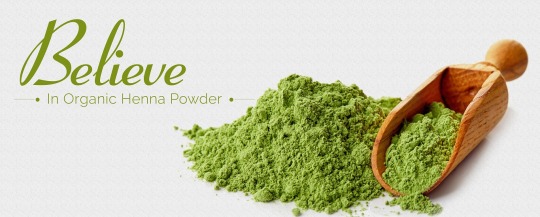
NMP Udhyog is one of the leading organic henna powder manufacturers in India. They specialize in producing high-quality henna powder that is free from any harmful chemicals or additives. They use only natural and organic henna leaves to produce their henna powder, ensuring that their product is safe and healthy for their customers.
NMP Udhyog's henna powder is rich in natural color and provides excellent coverage for grey hair. It is also a popular choice for natural body art and is known for its deep red color and long-lasting effect. Moreover, their henna powder is rich in essential nutrients that help to nourish and strengthen your hair, promoting healthy hair growth.
In conclusion, using henna has a long list of benefits that make it an excellent choice for natural hair dye, body art, and skin care. NMP Udhyog is a trusted supplier of high-quality organic henna powder in India, and their pro
ducts are safe and healthy for their customers. So if you're looking for a natural and safe alternative to chemical-based products, give henna a try and experience the many benefits it has to offer.
0 notes
Text
Make Your Own Cosmetics, Get What You Actually Want
Once you've been in zero waste, eco friendly, solarpunk/lunarpunk circles for a while, it's easy to forget the steps you took when you started. There are lots of DIY projects I've been doing for 10+ years now, and I keep doing them because they work (for me). Yet, when I sit back and think "am I doing enough?" I always gloss over the myriad things that have become part of my everyday life.
Making these things won't save the environment, but you'll get products that meet your needs on your terms, will save you money, and you won't have to worry about a company discontinuing your favorites. Plus, it seems like a lot less packaging to just buy a brick of beeswax and toss in some kitchen stuff you already had to make makeup.
Henna
I got really lucky, I always wanted red hair and henna is a natural dye that only comes in red. Well, more of a coppery tone. But, here's the other cool thing: the henna process is anti-fungal and controls dandruff. Half the time, I remember to color my hair because my scalp starts getting itchy 6+ weeks later and I start to get flakes. Coloring my hair takes care of my scalp and I don't need dandruff shampoo to keep it healthy. It's cost-effective, buying high quality henna for a year's worth of color (for my length and thicc hair) is about $60 for 18-months' of materials. I mix it when I need it, and keep the powder in the freezer. Pro-tip, if you or your partner don't like the grassy, hay-like smell of henna, add cardamom or ginger powder to the mix. It doesn't change the color but it'll knock down the scent.
I learned everything I needed to know about Henna for Hair here: http://hennaforhair.com and buy through Catherine's store because I know I'm getting real, quality henna powder.
Oh and a cloth wrap for your hair will let you keep the henna covered without wasting plastic wrap every time you redo your roots. I've been using the same 'turbie twist' wraps for years now. I made them from old t-shirts and they're stained as fuck. Who cares? This is basically their only job.
Carmine Lip Color
No, it isn't vegan. Yes, it's made of bugs. It's also a spectacular color, the insects aren't abused in the process of gathering or raising. They're actually parasites on nopal cactus, they have a simple niche and serve it well. I learned this lip stain recipe from Humblee & Me, and have found that the anti-bacterial doesn't seem to be necessary, ymmv. A 2.5 gram sample pack of carmine from TKB has lasted me almost a year and I wear this almost daily. I find that the glycerin really helps keep my lips from drying out too badly, so I wear my lip stain even when I'm not planning on being seen by other people. I spend about $20 on lip color for a year and that's including the bottles I use to store it (tiny eyedroppers work best imo) and the glycerin. Not quite zero waste but darn close.
Note: I'm still trying to find a simple recipe for black goth lipstick that I like. So far, my attempts have had a nasty texture and aren't worth the trouble.
Eyebrow Fill
My favorite brand of eyebrow liner discontinued the best color I ever found, so I decided to make my own. Beeswax, cocoa powder, activated charcoal, and almond oil made a little pot of eyebrow fill that suits my needs beautifully. Go super light on the charcoal until you know you've got the color you want. My brows are pretty dark but not fully black, so I do a dark chocolate sort of shade. I think I made my last batch about 11 months ago and it's still half full. I use it daily, apply with an angled brush, and it's never given me breakouts or anything. I don't even wash it off, because I am lazy.
Body Powder/Dry shampoo
Growing up in California, I didn't need this stuff. Living in Oregon? Summer would be awful without body powder. It's also a nice way to have a fragrance on. Pour your favorite perfume (I love Black Phoenix Alchemy Lab oils) onto a cotton ball, put that ball in a jar with a bunch of corn starch. Shake. Leave it for a month. You now have scented body powder. It's a decent dry shampoo, too, I just brush it into my dark hair and it disappears.
Tooth Powder
There is NOTHING wrong with using conventional toothpaste if it meets your needs. I have particular reasons for using tooth powder. These include hating the taste of most toothpaste and needing to avoid fluoride because of my particular thyroid condition. (Fluoride isn't bad for everyone! It isn't ideal for everyone. Figure out what you need!) I make my own tooth powder, it works well enough for me and I don't hate brushing my teeth like I used to. 1 part baking soda, 1 part bentonite clay, some ground cloves. Mix it up, keep in a glass jar (metal will bond with the clay, bad things happen, this is why we use glass or plastic for storage). $20 of materials = LOADS of tooth powder.
Cutting Hair
It's way easier than you think. I cut my own hair and I do a graduated bob which is a little more complex than most at-home cuts. I taught myself. I use decent shears (don't use scissors) and a Wahl hair trimmer set. Learn this skill on yourself, and when people find out you can do hair, they'll come to you for their own needs. Great way to provide mutual aid (one of my parents is trans and getting haircuts in a salon would be extremely stressful for her, so I cut her hair and save her money and suffering). You could also do skill trades! I trade haircuts for massages from a massage therapist friend, for example.
Protip: Dust yourself with body powder before cutting hair, it makes the little shards of cut hair way less prone to sticking to you. You'll still want a shower but it'll just be less icky.
37 notes
·
View notes
Text

Transform Your Hair with Elina Indigo Powder
Discover the natural way to achieve rich, dark hair with Elina Indigo Powder. This 100% pure and organic powder is perfect for creating beautiful, long-lasting colour without harmful chemicals. Ideal for covering greys or adding depth to your natural shade, Elina Indigo Powder nourishes your hair while providing vibrant, lustrous results. Try it today and experience the power of nature for your hair care routine!
#elinastores.com#henna#herbal powder for hair#amazon#ecommerce#hair color#digital marketing#online business#hair care#hair growing natural tips#hair nourishment
0 notes
Text
Going back to our roots- the haircare edition
Part-1: Haircare- Love in Oiling
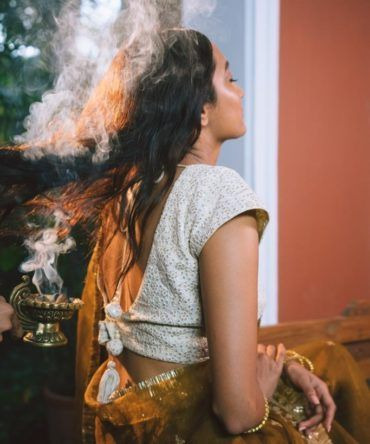
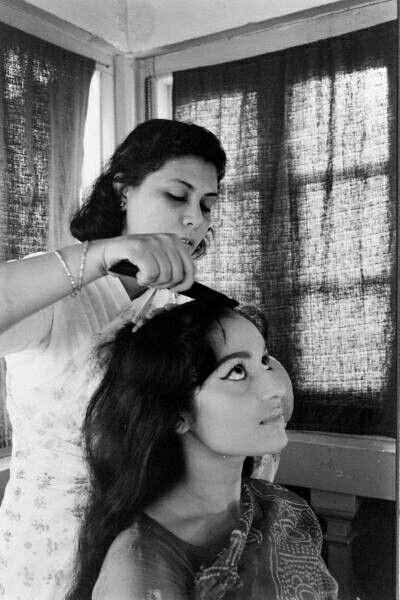
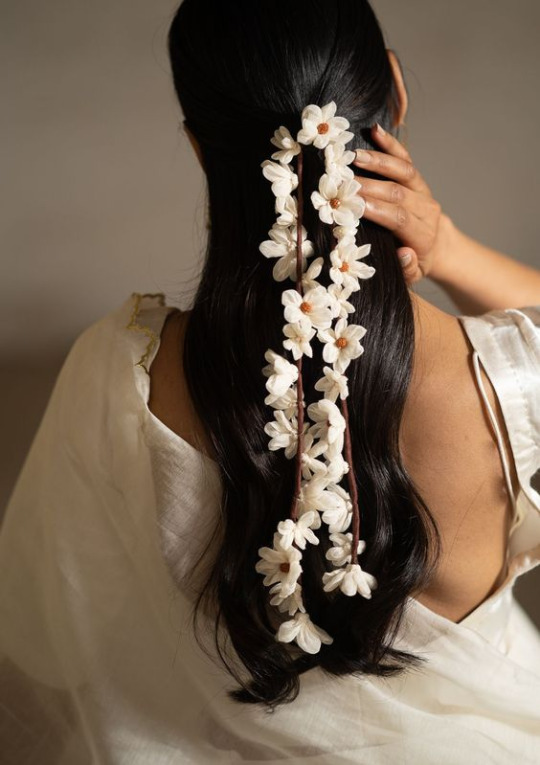
Haircare through oiling transcends generations, embodying a profound expression of love and connection in our culture. It's a shared journey of tenderness, a story every desi knows, of bonding with our mothers and grandmothers. I recall how my mother would lovingly oil my hair, a ritual that strengthened our connection. My hair suffered when I stopped allowing her to care for it, emphasizing that oiling hair is more than just a routine – it's an intimate experience. Beyond mere beauty, hair-oiling serves as a cherished heritage, a bond passed lovingly from one generation to the next.
THE THREE DOSHAS

Ayurveda posits the existence of three fundamental life energies, known as doshas, within every individual:
Vatta
Pitta
Kapha
An excess of any of these doshas can disrupt the body's equilibrium, and its impact is particularly noticeable in its effect on our hair.
In Ayurvedic philosophy, the scalp is perceived as having numerous energy-balancing centres known as "marmas." Hair oiling is considered a rejuvenating practice, as it assists in eliminating any surplus doshas that tend to accumulate in the head.
AYURVEDIC HAIR-TYPE

Healthy Vata-Type Hair is relatively thin, but often a bit coarse, may be straight, curly, or a combination of the two, grows quickly, and can be a bit unruly—potentially making it more challenging to style.
Healthy Pitta-Type Hair is straight, soft, predictable, and of moderate thickness, but very fine.
Healthy Kapha-Type Hair is typically wavy, lustrous, full, strong, coarse, and thick.
Common Imbalances
VATA- DOMINANT HAIR
Characteristics: The imbalance in vata dosha causes excessive dryness, flaky dandruff, frizzy and brittle hair. It may also cause hair thinning and split ends.
Care: It is recommended that you oil your hair two-three times a week with almond oil, cocunut oil or sesame oil infused with hair strengthening herbs like bhringraj, liquorice, shatavari, ashwagandha. Avoid harsh chemicals and heat styling to protect fragile Vata hair. Natural hair masks with honey, yogurt, or henna can further strengthen and improve its texture and shine.
Dietary additions: Vata is a cold and dry dosha, therefore, warming, grounding, and nourishing foods like nuts and seeds, with moderately heavy texture, with healthy fats (like Omega 3 fatty acids) are advised. Choose salty, sour, and sweet tastes as well as soothing and satisfying foods.
PITA DOMINANT HAIR
Characteristics: The imbalance in pitta hair might lead to excess heat in the hair follicles, thinning or premature greying hair.
Care: Use coconut oil infused with cooling herbs like hibiscus, amla and kalonji seeds. Include weekly masking with ingredients that repair such as aloe vera and brahmi. Opt for natural, chemical-free hair care products.
Dietary additions: Those with predominant pitta should refrain from spicy and astringent foods, and look for foods that are alkaline, which cool and soothe the digestive fire.
KAPHA DOMINANT HAIR
Characteristics: An imbalance in the kapha dosha can result in excess oil secretion that blocks the follicles of your scalp, which leads to wet and sticky flakes.
Care: The Kapha hair care routine involves cleansing hair and scalp 2-3 times weekly with natural herbs like reetha, shikakai, and triphala powder. For purification, use neem oil. It is effective for dandruff in bi-weekly oil-and-wash sessions.
Dietary additions: Those with the kapha dosha should focus on warm, light, foods made with dry cooking methods like baking, broiling, grilling, sautéing, etc.
Choose organic, chemical-free, and 100% virgin oils, even if they cost use( 3-4 tablespoons). Honestly, I would say get your oils pressed from a local vendor. That's what I do. It's 100% virgin and doesn't cost much at all. Otherwise, you can get them online. If you guys want, I can attach some product links too.
References:
https://www.byrdie.com/hair-oiling-indian-tradition-4795886
https://enrouteindianhistory.com/ayurveda-hair-care-tips-from-ancient-india/#:~:text=Rani Padmini%2C interestingly%2C used a,recently around the 1930s only.
https://www.theswaddle.com/hair-oil-ayurveda-benefits
https://vedix.com/blogs/articles/how-to-determine-your-hair-type
https://www.sukhayuayurved.com/hair-type-and-ayurvedic-doshas/
https://www.vogue.in/beauty/content/ayurvedic-dosha-significance-for-your-hair-type-haircare-routine
https://www.sesacare.com/blogs/blog/what-is-your-ayurvedic-hair-type
(pictures from pinterest)
#desi#desiblr#desi feminine#desi tumblr#desi academia#desi femininity#desi girl#level up#desi tag#feminine#desifemininewoman
21 notes
·
View notes
Note

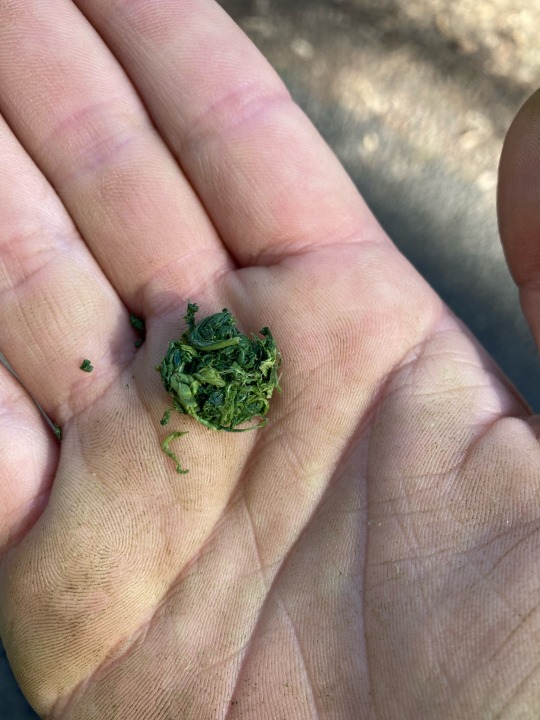

(I have posted about this on @official-nature-posts before but asking you specifically. So when I remembered that Japanese indigo is a persicaria, I wondered if my local Persicaria Decipiens would work. I could see some blue hints just crushing it up which is good, best seen in the blurry photo. I plan on doing fresh leaf dyeing first, but I have been reading up about small scale indigo vats which id like to know if you know much about them? I don’t want to have to buy chemicals.I know that they need an alkali (I can wood ash lye or even calcium hydroxide at a pinch by heating up ashes a lot) a reducing agent ( fructose, I saw one blog that was using boiled orange peels and also trying pectin.) and of course the indigo source. Do you know how the reducing agents work. I will wait a while for it to warm up so the plants start growing again because they get knocked about by frost each year. Also hopefully going to grow some Japanese indigo.
Ooh, cool! I've gotten to try indigo dyeing on a course once, and one of my friends there showed how to make an organic dye vat, Michel Garcia's style (you can find his tutorials on youtube too!). Both were made with ready indigo powder, though. Let's check my notes first, then I'll talk about the plants. Prepare for a long read!
Chemical dye process
For reference, the normal chemical process went like this: we used 10% WOF (weight of fibre) sodium hydroxide to get a high (10-11) pH to help extract the dye. Temperature should be 40-50⁰C., and the extraction time was 40 minutes. For the reduction, we used sodium dithionate 60% WOF at 55⁰C (no higher, it wastes some dye), and pH was 8-9. At that step we had to leave the room for 30 minutes because it's toxic to let it settle. A tip for controlling the temperature: use a double boiler. After the 30 minutes, it looked like this:

A pretty metallic sheen on the surface and an "indigo flower" bubble in the middle had formed! Underneath the mixture was a yellowish green.
For dyeing, dip it 1-10 minutes, try not to get air mixed into the dye bath. We used a parsley boiling kettle with its basket to dip the fibers in! Presoaking in water also helps the dye absorb more evenly. Pulling it out is magical, as it oxidized it turns from green to blue! Then rinse with vinegar and water and continue rinsing with water.

Organic vat method
This method can be done in smaller scale! It works like this:
Ingredients:
1 part indigo powder
2 parts calcium hydroxide (pickling lime) for alkaline agent
3 parts food-grade fructose or any other natural reducing agent (henna, oignon, very ripe fruits or an old madder dye vat are some suggestions!)
The indigo powder was dissolved into a bit of water first by putting it into a plastic box with some marbles and shaking it around to form a smooth paste.
For the reducing agent, the fructose was simply dissolved into 7-8 liters of water. If using henna (Lausaunia Inermis), prepare a "decoction" by putting the extract in cold water and boil till the powder remains in the bottom, then filter through a cloth and let cool to 50-70⁰C.
Then the indigo paste was added to the reducing agent. Probably let this sit for 40 minutes too?
For the alkaline agent, also don't breathe or touch with bare hands. Dissolve the calcium hydroxide in warm water and add that mixture into the indigo dye vat, carefully pouring it along the container wall to avoid getting air mixed in. Stir three times, creating a vortex. It should turn green, and look like the picture above with a metallic surface and blue bubbles. Then cover the vat tightly and let sit for 12-24 hours for the indigo to dissolve and reduce. Then carefully stir it and check the pH. Adjust it if needed:
For wool, pH 10 and temp 40-45⁰C.
For silk, pH 11 and no heating necessary.
For celluloce fibers like cotton/linen, pH 12 or higher and no heating necessary.
Dyeing: With presoaked fibers, dip for 30 minutes. Press the fibers against the wall of the container to avoid getting air = oxygen into the dye bath. At this point, it should look green.
Then the dye needs to be oxidized. To do this, remove the fibers from the dye vat, gently wring excess dye out, and push it in and out of cold water, opening any folds as you do. After the colour stabilizes into blue, hang it to dry for 30 minutes.
For best results, repeat this dyeing process two more times. If you want darker, extend the dipping and drying time on the second and third dye round to 1 hour and 1.5 hours.
When using fresh plants, I think you can extract the dye first and then use the extracted and filtered solution (or paste, if you use a lot of leaves and dehydrate it a bit) as a base for the fructose step. More on the extraction later.
Indigo compounds in plants
I'm not familiar with the plant you mention, so I don't know if it's as good as the indigo plant, Persicaria Tinctoria. I think you should still try, as crushing the leaves shows blues thing is very engouraging. I bet you'd at least get nice greens or greenish yellows if not even turquoise or blue!
Indigo is a category of many dye chemicals, and P. Tinctoria contains (among others) indirubin, which is the red indigoid chemical that makes indigo a more dark purple kind of blue. We have another plant, Isatis Tinctoria (common name woad, morsinko in Finnish), growing here, and it's also cultivated for indigo, but it doesn't have indirubin, hence the colour it gives is a bit cooler blue. So be aware that the shades you get might be different from what you're used to seeing as indigo! Also with our I. Tinctoria I remember reading that it's recommended to pick the leaves when they're young and keep them intact for best dyeing results. Though it depends on the method.
Indigo as a compound is not water-soluble, so that's why we need to reduce = remove the oxygen from the dye bath, so that it can turn into its precursor, that is water-soluble. The precursors are sensitive to light and oxygen during the process, so it can be tricky to get it to work. In the dye process the precursor sticks to the fibers, makes it green, and when it oxidizes in the air, it turns to indigo = blue.
Also in some traditions the leaves have been fermented first, and then used in the dye vat – that might be interesting to look into! Fermentation is also a way to reduce a vat, as the yeast and bacteria use up the oxygen in the fermentation process. Here's some reading on the traditional dyeing methods with I. Tinctoria that Outi, a natural dyer from Finland, recommended:
"A treatise on the culture, preparation, history, and analysis of pastel, or woad : the different methods of extracting the coloring matter, and the manner of using it, and indigo, in dyeing" (Lasteyrie, Dearborn 1816)
"The woad plant and its dye" (Hurry 1930)
Extracting from plants
I don't have any personal experience about this, but I'm going off of this finnish blog post on dyeing with I. Tinctoria, that I think should work very similarly. Her reasoning was that high heat and oxygen destroy the precursors of indigo, but high heat breaks the cells of the plants to allow for the dye compounds to dissolve into the water, so she put the plant leaves into boiling water and then put cold water on top soon to drop the temperature to around 50⁰C. (Also with the same reasoning, if you need to rinse the plants, use cold water). The leaves turned yellow in the 20 minutes they brewed, after that her steps were:
Remove the leaves
Add soda ash (50 grams, vat pH now 11)
Whisk for 20 minutes to add oxygen (at this step it should be more blueish, keep whisking until the bubbles turn pale, though hers was green) (I'm not convinced if this step is good)
Add 40 grams of a stain remover that contains sodium dithionate to reduce and leave for an hour
Peel the metallic surface and dye!
Wow, that was long. I find indigo dyeing super fascinating so it was fun to research it again! I hope some of this is useful to you!
4 notes
·
View notes